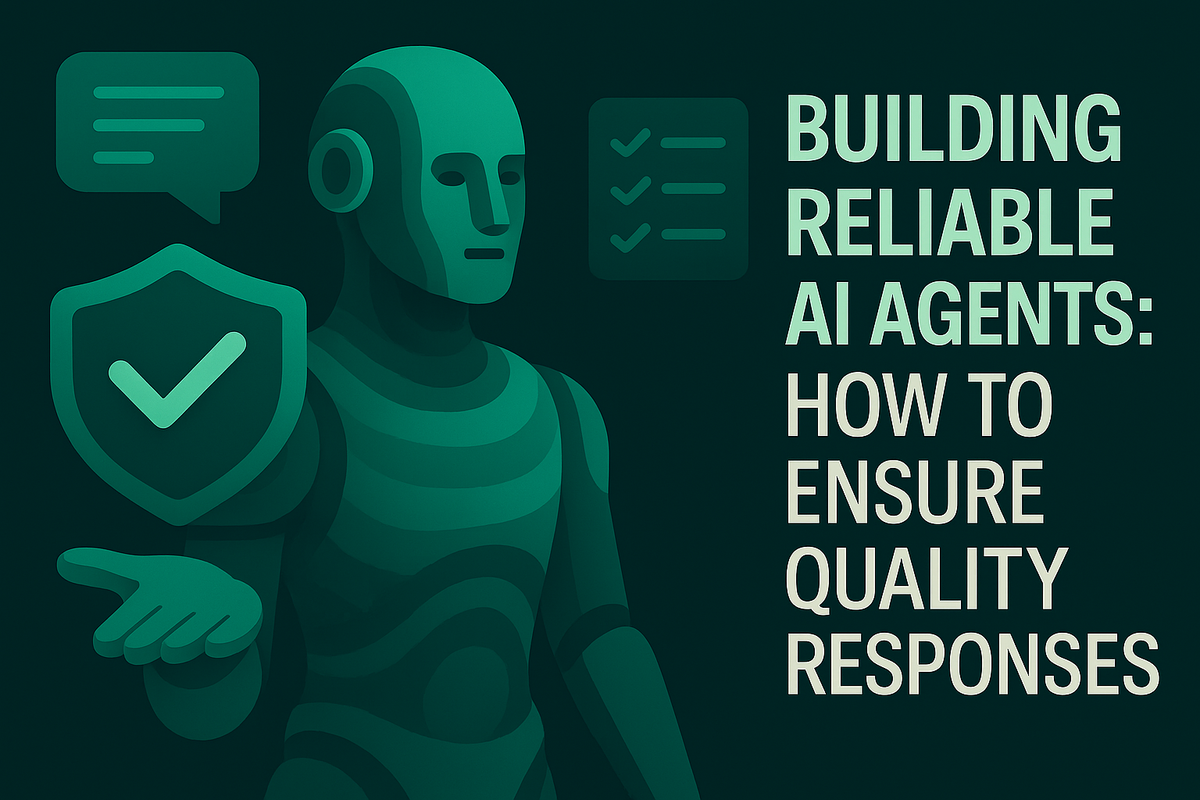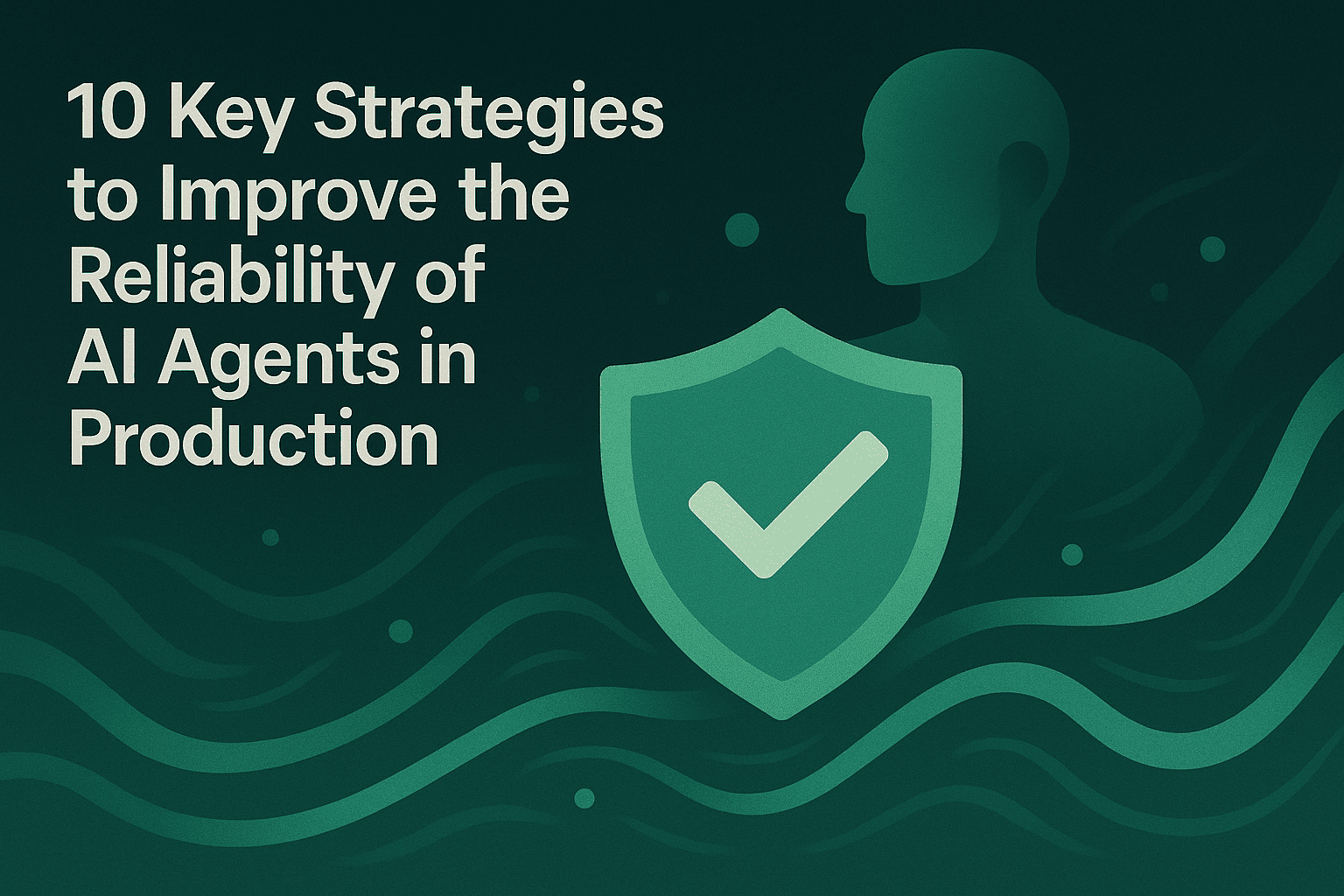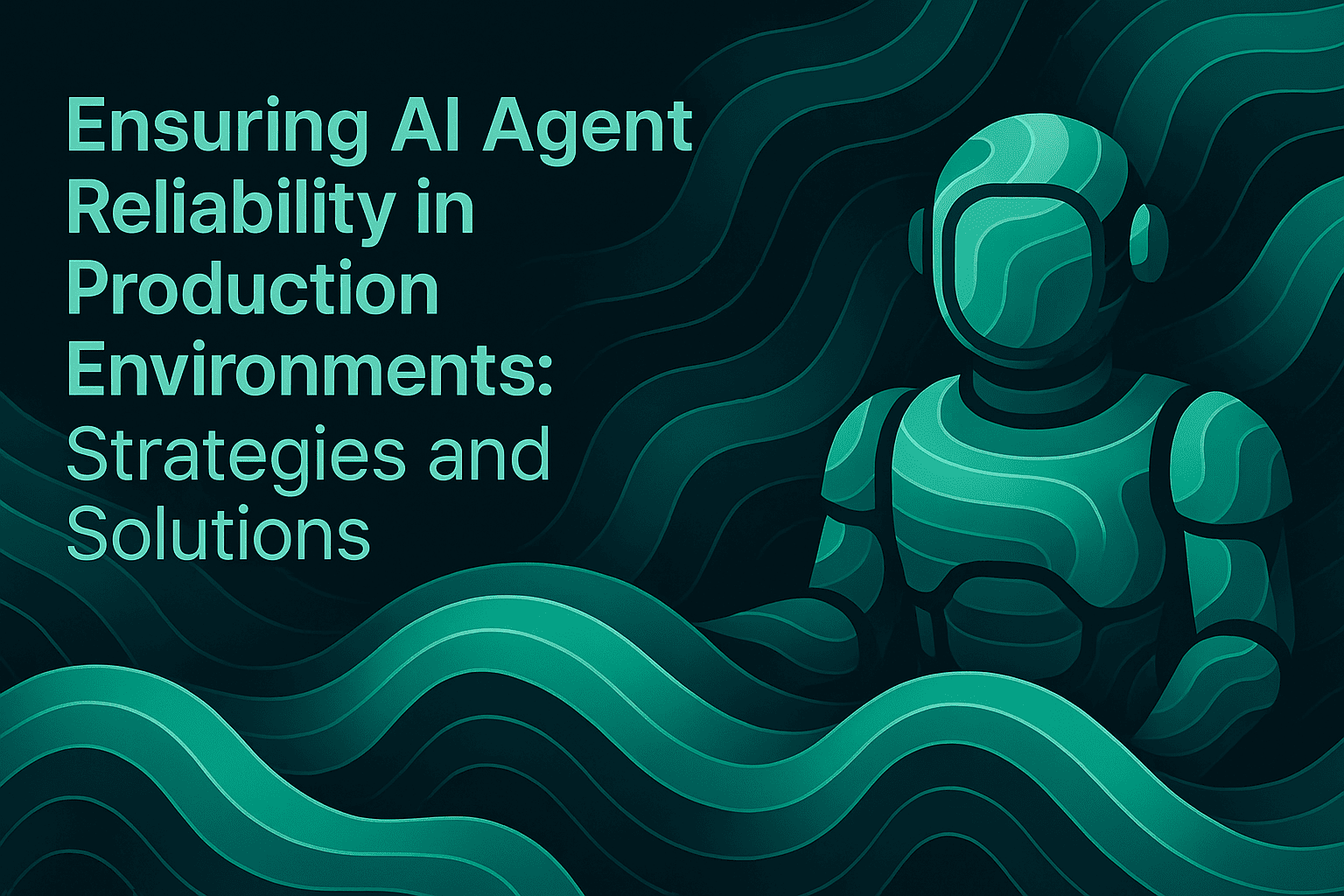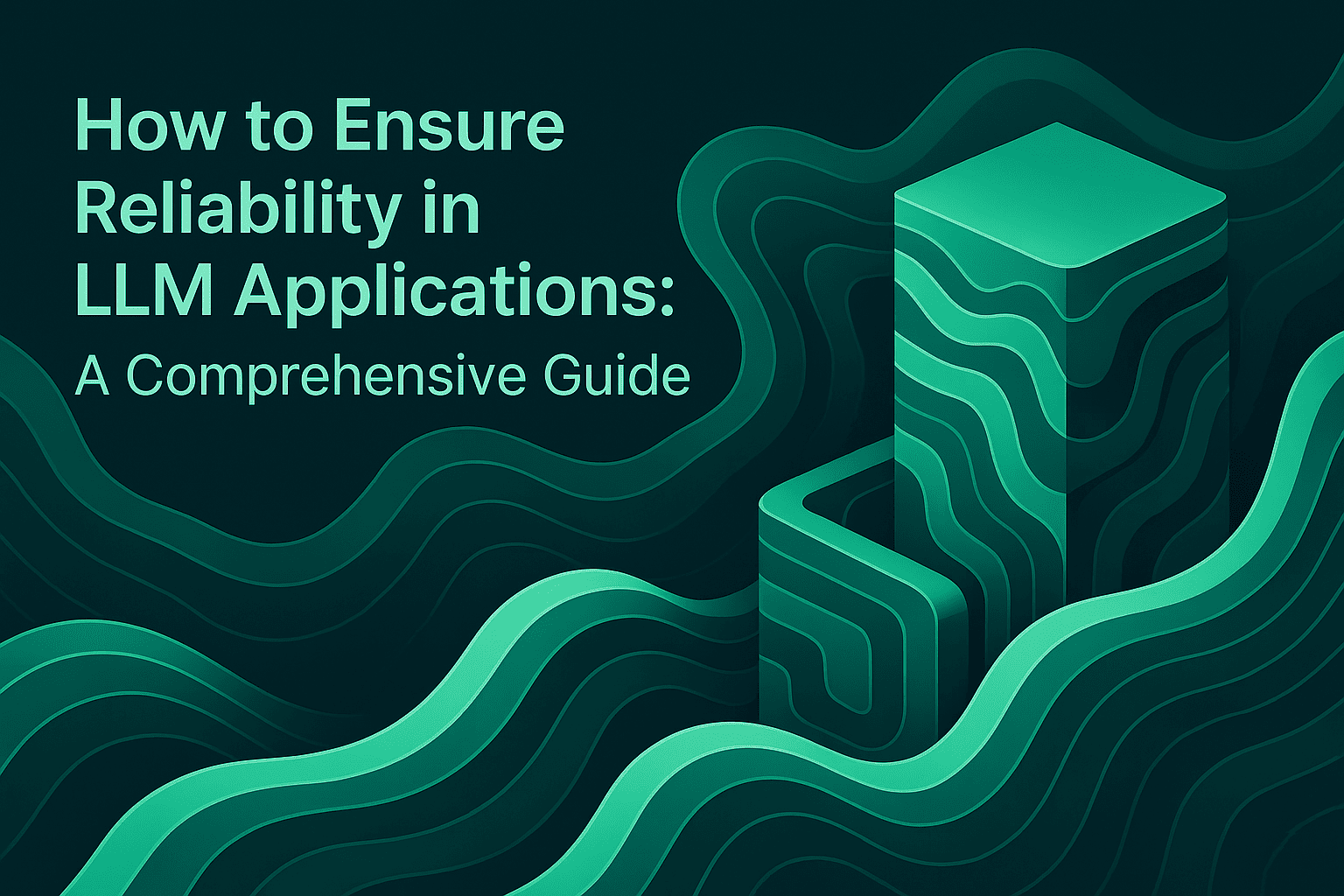Building Reliable AI Agents: How to Ensure Quality Responses Every Time

1. Why Reliability Is the Real KPI
A flashy demo is fun, but the board cares about one thing: consistent, accurate output. A single hallucinated answer can tank user trust faster than you can say “GPT-4.” Many enterprises identify reliability as a core barrier to scaling AI systems across production use cases. That stat lands because every bad response is a potential support ticket, compliance incident, or angry tweet.
Bottom line: reliability isn’t a nice-to-have. It’s the reason your AI budget survives next year’s round of cuts.
2. What Goes Wrong (and Why)
Before we prescribe, we diagnose. Here are the usual suspects:
| Failure Mode | What It Looks Like | Root Cause |
|---|---|---|
| Hallucination | “Sure, your credit score is 980.” | Missing retrieval guardrails |
| Stale Knowledge | Cites 2022 tax rules in 2025 | Out-of-date embeddings or databases |
| Over-confidence | Gives wrong answer with a 0.99 score | Poor calibration |
| Latency Spikes | 12-sec response times at peak | Suboptimal model selection, provider bottlenecks, or upstream dependency delays.g |
| Prompt Drift | Output tone slides from “formal” to “memelord” | Ad-hoc prompt edits |
Each failure boils down to two gaps: lack of evaluation before release and lack of observability after release. Close both and you win.
3. The Five Pillars of Reliable AI Agents
3.1 High-Quality Prompts
Garbage prompt, garbage output. Test your prompts like you A/B test landing pages. Maxim provides prompt versioning, tagging, and evaluation workflows that support regression analysis.
3.2 Robust Evaluation Metrics
Accuracy is table stakes. Additional metrics such as factuality, coherence, and task-specific quality indicators provide a more complete understanding of agent performance. Get the full rundown in our blog on AI agent evaluation metrics.
3.3 Automated Workflows
Manual spot checks don’t scale. Use evaluation pipelines that trigger on every code push. See how in Evaluation Workflows for AI Agents.
3.4 Real-Time Observability
Production traffic is the ultimate test. Maxim’s LLM observability playbook shows how to trace every call, log, and edge case.
3.5 Continuous Improvement
Feedback loops turn failures into features. Track drift, retrain, redeploy, without downtime. Our take on AI reliability details the loop.
4. A Step-by-Step Quality Workflow
- Define “good.” Write crisp acceptance criteria for every user intent. If you can’t score it, you can’t fix it.
- Write modular prompts. One prompt per intent keeps changes surgical.
- Unit-test with synthetic cases. Pair golden answers with edge-case variations.
- Batch-test with real logs. Replay a day’s traffic against the new prompt.
- Score automatically. Use metrics such as semantic similarity or LLM-based grading to quantify output quality. Maxim’s What Are AI Evals? explains the math.
- Gate on regression. Block deploys that fail key thresholds.
- Deploy under observability. Stream traces to a dashboard; set alerts on spike patterns.
- Collect explicit feedback. Thumbs-up/down goes straight into a retrain queue.
- Analyze drift weekly. Compare current scores to baseline; update embeddings or prompts.
- Rinse and repeat. Reliability is a habit, not a sprint.
5. Tooling That Gets You There
Prompt Versioning
Git for prompts. Roll back faster than you can say “oops.” Maxim’s Prompt Library supports version history, metadata, and structured comparison across prompt iterations
Evaluation Harness
Run hundreds of test cases in parallel. The Maxim Evaluator supports custom scoring functions and blends human-in-the-loop when nuance matters.
Trace-First Observability
Maxim provides structured traces, logs, and metrics that present agent activity in an integrated view. Check out our Agent Tracing guide for setup tips.
Production Metrics Dashboard
Track pass rate, top intents, and hallucination frequency in real time. Slice by user cohort or model version. Dashboards can be configured without writing database queries.
6. Case Study: Clinc’s Conversational Banking
Fintechs can’t afford sloppy answers. Clinc integrated Maxim’s evaluation workflow and slashed hallucinations by 72 % in three weeks. Read the full story here.
Key wins:
- 30 % faster prompt iterations
- Automatic blocking of non-compliant responses
- Five-nines uptime despite traffic surges
7. External Best Practices Worth Borrowing
- NIST AI RMF: A policy-level checklist for managing AI risk.
- Google’s Model Cards: Transparent reporting on model limits.
- Microsoft’s Responsible AI Standard: Governance frameworks that map nicely to enterprise controls.
Borrow the ideas. Ship with Maxim’s tooling.
8. The Ultimate Reliability Checklist
- Clear success metrics
- Version-controlled prompts
- Synthetic and real-log test suites
- Automated pass-fail gates
- Tracing and alerting integrated into the observability workflow
- Weekly drift analysis
- Continuous feedback ingestion
- KPI dashboard shared with the exec team
Print it, laminate it, stick it on the war room wall.
9. Common Pitfalls (and Fast Fixes)
| Pitfall | Fast Fix |
|---|---|
| Testing only happy paths | Add adversarial prompts that flip intents. |
| One-time prompt tuning | Schedule monthly prompt audits. |
| Ignoring latency metrics | Log both average and p99 latency; optimize routing. |
| Over-fitting to eval set | Refresh test cases quarterly with fresh logs. |
| Siloed ownership | Make reliability a cross-functional OKR. |
10. Where Maxim AI Fits In
Maxim bakes the entire reliability loop into one platform:
- Design – Prompt library with automatic diff-tracking
- Evaluate – Multi-metric test harness with human review
- Deploy – Releases that can be gated by automated regression evaluations
- Observe – Real-time tracing, dashboards, and drift alerts
- Improve – Feedback pipelines that auto-generate new test cases
Compare for yourself:
Maxim spans prompt management, evaluation, simulation, observability, and improvement workflows, offering broader coverage than single-function tools..
11. Getting Started in Under 30 Minutes
- Sign up. Grab a free sandbox at getmaxim.ai.
- Hook up your agent. Integrate the SDK with minimal code changes.
- Import test cases. CSV, JSON, or straight from your logs.
- Run your first eval. Get a pass-fail dashboard before lunch.
- Schedule a demo. See advanced workflows live, book a slot here.
12. Final Word
Reliable AI agents aren’t a moonshot. They’re the result of disciplined prompts, ruthless testing, and continuous feedback. Do the work manually if you’ve got the bandwidth. Or Maxim AI automates evaluation, monitoring, and iteration workflows, enabling teams to maintain reliability at scale
13. Further Reading
Want to keep sharpening your agent-reliability playbook? Start here:
- Maxim AI Docs: The nuts-and-bolts reference for setup, SDK calls, and API limits. https://docs.getmaxim.ai
- Prompt Management in 2025: Deep dive on prompt versioning, tagging, and rollback strategies. https://www.getmaxim.ai/articles/prompt-management-in-2025-how-to-organize-test-and-optimize-your-ai-prompts/
- AI Agent Quality Evaluation: A blueprint for scoring truthfulness, coherence, and safety. https://www.getmaxim.ai/blog/ai-agent-quality-evaluation/
- Evaluation Workflows for AI Agents: How to automate pass-fail gates on every pull request. https://www.getmaxim.ai/blog/evaluation-workflows-for-ai-agents/
- LLM Observability Guide: Real-time tracing and alerting without the headache. https://www.getmaxim.ai/articles/llm-observability-how-to-monitor-large-language-models-in-production/
- NIST AI Risk Management Framework: The government standard for responsible AI. https://csrc.nist.gov/publications/detail/nist-ai-100-1/final
- Google Model Cards: A practical template for documenting model limits and intended use. https://ai.googleblog.com/2019/10/introducing-model-cards-for-model.html
- Microsoft Responsible AI Standard: Governance checkpoints you can adapt to your own org. https://www.microsoft.com/en-us/ai/responsible-ai
- Stanford HAI Policy Briefs: Academic takes on AI regulation and safety. https://hai.stanford.edu/research/policy
Bookmark the list, share it with the team, and keep the bar high. Your users will notice. Your competitors will wonder what hit them.


